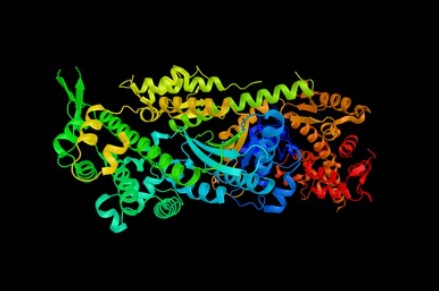Skeletal Muscle Markers
Overview of Skeletal Muscle Markers

Bone marrow (BM) mainly consists of hematopoietic stem cells (HSCs) and mesenchymal stem cells (MSCs), of which HSCs mainly differentiate into various mature blood cells. In recent years, many studies have reported that bone marrow MSCs and umbilical cord blood MSCs can differentiate into mature non-hematopoietic tissue cells (myoblasts, such as hepatocytes, cardiac muscle, skeletal muscle myoblasts, and neuronal cells) in vitro and in vivo (Lee JH, et al., 2005. Gang EJ, et al., 2004). Skeletal muscle markers (SMMs) are a class of molecular markers specific to skeletal muscle cells and have also been widely studied as factors for the differentiation of mesenchymal stem cells (MSCs) into skeletal muscle cells. Some commonly used skeletal muscle markers include skeletal muscle actin (SMA), skeletal muscle myosin heavy chain (SM-MHC), and skeletal muscle regulatory protein (myogenin). These markers are specific and can be detected by immunohistochemistry or molecular biology techniques. By utilizing these markers, researchers can track the differentiation of MSCs into skeletal muscle cells and investigate the mechanisms involved in this process.
Research Areas of Skeletal Muscle Markers
Skeletal muscle markers as differentiation factors for mesenchymal stem cells (MSCs) are an area of intense research interest. Skeletal muscle markers are indicators used to identify specific molecules in the process of skeletal muscle differentiation. By identifying and utilizing these markers, researchers can direct the differentiation of MSCs in a specific direction towards skeletal muscle cells, thus providing potential opportunities for applications in several research areas.
- Muscle injury repair
Skeletal muscle injury is a common clinical problem, and the differentiation of MSCs into skeletal muscle cells may help promote the repair and regeneration of injured muscle. By utilizing skeletal muscle markers, researchers can direct the targeted differentiation of MSCs into skeletal muscle cells and study their repair mechanisms, thus providing new therapeutic strategies and tools (Pumberger M, et al., 2016).
- Neuromuscular disease treatment
Many neuromuscular diseases, such as amyotrophic lateral sclerosis (ALS) and muscular dystrophy, result in abnormal function or loss of skeletal muscle cells in the human body. Utilizing the ability of MSCs to differentiate into skeletal muscle cells could provide new opportunities and directions for the treatment of these diseases.
- Exercise physiology research
The study of skeletal muscle markers not only helps to understand the process of differentiation of MSCs into skeletal muscle cells but also provides an important tool for exercise physiology studies. Through the use of skeletal muscle markers, researchers can track and quantify the efficiency and rate of differentiation of MSCs into skeletal muscle cells, which can lead to in-depth studies of muscle physiology and pathological processes.
- Muscle tissue engineering
Muscle tissue engineering is an important field that involves repairing and regenerating damaged muscle tissue. By differentiating MSCs into skeletal muscle cells and combining them with scaffolding materials and bioactive substances, functional artificial muscle tissues can be constructed for transplantation and replacement therapy (Wang Y, et al., 2020).
Overall, the research field of skeletal muscle markers as MSC differentiation factors has a wide range of applications. As our understanding of skeletal muscle markers continues to deepen and technology continues to advance, we expect to develop more precise and effective methods to utilize MSCs and skeletal muscle markers to treat and repair skeletal muscle-related diseases and injuries.
Reference:
- Lee JH, Kosinski PA, Kemp DM. Contribution of human bone marrow stem cells to individual skeletal myotubes followed by myogenic gene activation [J]. Exp Cell Res, 2005,307 (1):174 -182.
- Gang EJ, Jeong JA, Hong SH, et al. Skeletal myogenic differentiation of mesenchymal stem cells isolated from human umbilical cord blood [J]. Stem Cells,2004,22(4):617-624.
- Pumberger M, Qazi T H, Ehrentraut M C, et al. Synthetic niche to modulate regenerative potential of MSCs and enhance skeletal muscle regeneration [J]. Biomaterials, 2016, 99: 95-108.
- Wang Y, Wang D, Guo Y, et al. The application of bone marrow mesenchymal stem cells and biomaterials in skeletal muscle regeneration[J]. Regenerative therapy, 2020, 15: 285-294.


